Share
Avoid costly equipment finance mistakes that plague Australian SMEs. Learn the 5 critical errors, compare chattel mortgage vs hire purchase options, and discover how to save thousands on business equipment loans with expert guidance from industry professionals.
Australian businesses are investing heavily in equipment and machinery, with spending reaching an unprecedented $86 billion in 2024-25. This surge reflects growing confidence across industries, but it also highlights a critical challenge many small-to-medium enterprises face: navigating equipment finance without falling into costly traps that can devastate cash flow.
Equipment financing facilitates over 40% of total capital expenditure for Australian businesses, making it one of the most significant financial decisions SME owners will make. Yet despite its importance, equipment finance mistakes continue to plague business owners, leading to cash flow problems, missed opportunities, and unnecessary costs that can threaten business viability.
Recent data shows that 14% of Australian businesses ceased operations in 2024, with cash flow issues being a primary factor. Many of these failures could have been prevented with better equipment finance planning and decision-making. The stakes are particularly high for SMEs, where a single poor financing decision can impact years of operations.
This comprehensive analysis examines the five most damaging equipment finance mistakes Australian business owners make, plus critical additional guidance that can determine your business’s financial success. Whether you’re exploring chattel mortgage options in Sydney, comparing hire purchase agreements in Melbourne, or investigating finance lease alternatives in Brisbane, understanding these pitfalls will help you make informed decisions that support long-term growth.
Quick Reference Checklist:
- Compare total costs, not just interest rates
- Match finance structure to your business needs
- Budget for all equipment ownership costs
- Secure pre-approval before shopping
- Use professional brokers to access better rates
Mistake 1: Focusing only on the interest rate
The hidden cost trap that catches most business owners
The biggest equipment finance mistake Australian business owners make is fixating on interest rates while ignoring the total cost of finance. A seemingly attractive 6.2% rate can quickly become more expensive than an 8.1% alternative when hidden fees, charges, and unfavourable terms are factored in.
Real cost breakdown example
Take two $150,000 equipment loans over five years that appear vastly different:
Option A: 6.2% rate
- Establishment fee: $1,800
- Monthly account fees: $35 x 60 months = $2,100
- Balloon payment: $30,000
- Total repayments: $178,420
Option B: 8.1% rate
- No establishment fee
- No monthly fees
- Fully amortising payments
- Total repayments: $181,650
Despite the higher advertised rate, Option B costs only $3,230 more over five years while providing complete ownership without balloon payment risk.
The comparison rate provides a more accurate picture by incorporating fees and charges into a single percentage figure. However, even comparison rates can be misleading if they’re calculated using different loan amounts or terms than you require. Professional equipment finance brokers can provide detailed cost breakdowns showing exactly what you’ll pay over the entire loan term.
Smart business owners focus on the total amount they’ll repay, not just the advertised rate. Request a clear schedule showing all fees, charges, and payments before making any equipment finance decision. This transparency allows you to make genuine cost comparisons between different lenders and structures.
Additionally, be wary of introductory rates or special promotions that may revert to higher rates after an initial period. Variable rate equipment loans can also pose risks if rates rise significantly during your loan term. Fixed-rate financing provides payment certainty, which is often more valuable for cash flow planning than marginally lower variable rates.
Mistake 2: Choosing the wrong loan structure
Understanding your equipment finance options
Equipment finance in Australia offers several structures, each with distinct advantages and disadvantages. Choosing the wrong structure can cost you thousands in unnecessary taxes, reduce your cash flow flexibility, or leave you without the asset ownership you need for your business operations.
Chattel mortgage: Immediate ownership benefits
Chattel mortgage arrangements provide immediate asset ownership while using the equipment as loan security. This structure offers significant benefits for GST-registered businesses operating in Queensland, New South Wales, Victoria, and across Australia.
Key benefits:
- Claim full GST as input tax credit on next Business Activity Statement
- Immediate depreciation deductions available
- Loan interest fully tax deductible
- Complete asset control from day one
Best for: Established businesses with steady cash flow requiring long-term equipment ownership.
Hire purchase: Gradual ownership path
Hire purchase agreements let you use equipment immediately while paying it off over time, with ownership transferring after the final payment. This structure works well for businesses preferring lower initial cash outlay.
Key characteristics:
- Lower upfront costs than outright purchase
- Fixed payment schedule provides certainty
- No GST benefits until final payment
- Asset appears on balance sheet
Best for: Growing businesses that want eventual ownership but need to preserve working capital.
Finance lease: Flexible usage options
Finance lease arrangements involve the lender purchasing equipment and leasing it to your business for a fixed period. You can usually claim lease payments as tax deductions, but you don’t own the asset or claim depreciation.
Key features:
- Lease payments typically tax deductible
- Option to purchase at lease end
- Easier equipment upgrades
- Lower monthly payments possible
Best for: Businesses using equipment for specific projects or requiring regular technology updates.
The wrong structure choice often occurs when business owners don’t properly assess their cash flow patterns, tax position, or equipment usage requirements. A construction company using equipment year-round for multiple years would benefit from chattel mortgage ownership and depreciation claims. However, a business needing specialised equipment for a specific project might find an operating lease more cost-effective.
Asset lifespan alignment is crucial when choosing equipment finance structures. Taking a five-year hire purchase agreement for equipment that becomes obsolete within three years leaves you paying for assets that no longer generate income. Conversely, using short-term finance for long-lasting assets can create unnecessary cash flow pressure.
Professional advice from qualified accountants and equipment finance brokers can help you match the right structure to your specific circumstances. They can model different scenarios showing total costs, tax implications, and cash flow impacts over your intended equipment usage period.
Mistake 3: Failing to budget for total equipment costs
The true cost of equipment ownership
Many business owners focus solely on equipment purchase prices and monthly finance payments while overlooking substantial ongoing costs that accompany equipment ownership. This budgeting failure creates cash flow crises and forces businesses to seek additional funding just to keep their equipment operational.
Real-world cost examples
Heavy machinery (Excavator - $200,000 purchase)
- Annual maintenance: $25,000-35,000
- Insurance: $8,000-12,000
- Fuel and operation: $15,000-20,000
- Total annual costs: $48,000-67,000
Commercial vehicle fleet (5 delivery vans - $300,000 total)
- Registration and compliance: $8,000
- Insurance: $15,000
- Fuel: $45,000
- Maintenance and repairs: $18,000
- Total annual costs: $86,000
Technology equipment (IT infrastructure - $80,000)
- Software licences: $12,000
- Maintenance contracts: $8,000
- Upgrade requirements (3-year cycle): $26,000 annually
- Total annual costs: $46,000
Smart budgeting strategies
Create detailed equipment cost projections that include all ownership expenses, not just acquisition costs. Your equipment finance planning should account for:
- Routine maintenance and servicing schedules
- Insurance premiums and coverage requirements
- Fuel, electricity, or operational consumables
- Operator training and certification costs
- Eventual replacement or upgrade expenses
Technology equipment faces additional challenges through rapid obsolescence. Computer systems, software licences, and specialised equipment may require upgrades or replacement every 3-5 years to maintain productivity and competitiveness. Failing to budget for these refresh cycles can leave your business operating with outdated equipment that hampers efficiency.
Seasonal businesses face particular challenges in equipment cost budgeting. Agricultural operations might have equipment sitting idle for months, yet maintenance and insurance costs continue. Construction companies may see reduced equipment utilisation during winter months, but finance payments remain constant.
Smart equipment finance planning includes maintaining cash reserves equivalent to 3-6 months of equipment operating costs. This buffer helps manage unexpected repairs, seasonal fluctuations, or market downturns without jeopardising your finance commitments.
Mistake 4: Not getting pre-approval
The competitive advantage of confirmed funding
Failing to secure equipment finance pre-approval before shopping for equipment is a costly mistake that weakens your negotiating position and can delay critical business growth opportunities. Pre-approval provides certainty about your borrowing capacity and demonstrates to suppliers that you’re a serious buyer with confirmed funding.
Pre-approval success story
A Sydney construction company needed a new excavator worth $180,000. Without pre-approval, they found equipment but couldn’t secure immediate funding. The equipment was sold to another buyer while they waited for finance approval, delaying their project by six weeks and costing them a $90,000 contract.
After learning from this mistake, they secured pre-approval for their next purchase. Armed with confirmed $220,000 funding, they negotiated a 12% discount on a new excavator and completed the purchase within 48 hours, securing the equipment they needed for an upcoming project worth $150,000.
The pre-approval advantage
Supplier benefits:
- Negotiating discounts of 5-15% with confirmed funding
- Access to better equipment options and priority treatment
- Faster transaction completion and delivery scheduling
Business benefits:
- Clear budget parameters for equipment shopping
- Confidence in purchase decisions and timing
- Reduced risk of losing equipment opportunities
Timeline benefits:
- Pre-approval: 2-5 business days
- Validity period: 30-90 days
- Settlement after equipment selection: 24-48 hours
Equipment finance pre-approval also reveals your actual borrowing capacity based on current financial circumstances, credit history, and security position. Many business owners overestimate their borrowing ability, leading to disappointment when they find equipment they can’t afford. Conversely, some underestimate their capacity and miss opportunities for equipment that could significantly boost their productivity.
The pre-approval process requires gathering financial documentation, including recent business bank statements, profit and loss statements, balance sheets, and tax returns. Having these documents organised and readily available speeds up the approval process and demonstrates professional business management to potential lenders.
Working with equipment finance brokers can streamline pre-approval by submitting your application to multiple lenders simultaneously. This approach often reveals better pricing options and alternative structures you might not have known about when dealing directly with a single lender.
Mistake 5: Going direct without comparing lenders
Why broker expertise delivers better outcomes
Many business owners automatically approach their existing bank for equipment finance without exploring alternatives, potentially missing significant savings and better service options. This loyalty can be expensive, as banks don’t always offer the most competitive equipment finance rates or terms available in the Australian market.
The numbers speak for themselves
Recent market analysis reveals substantial variations in equipment finance pricing:
Rate variations by lender type:
- Major banks: 7.2%-11.8% p.a.
- Regional banks: 6.8%-10.5% p.a.
- Specialist lenders: 5.9%-9.2% p.a.
- Non-bank lenders: 6.1%-12.5% p.a.
Cost impact example ($250,000 loan over 5 years):
- Highest rate (11.8%): Total repayments $341,250
- Lowest rate (5.9%): Total repayments $284,190
- Potential savings: $57,060
The broker advantage in action
Equipment finance brokers provide access to wholesale rates and products not available to direct applicants. A Melbourne manufacturing company recently saved $23,000 over five years by using a broker instead of going directly to their bank. The broker accessed specialist manufacturing equipment rates 1.8% lower than the bank’s standard commercial rate.
Market access benefits
Professional equipment finance brokers typically work with 20-60+ lenders simultaneously, including:
- All major Australian banks
- Regional banks and credit unions
- Specialist asset finance companies
- International equipment finance providers
- Non-bank alternative lenders
This diversity means they can match your specific business profile, equipment type, and financial circumstances with lenders who view your application favourably, often resulting in better terms and faster approval.
The broker evaluation process typically saves 10-20 hours of research, application preparation, and negotiation time. For busy business owners, this time saving alone justifies using professional assistance, even before considering potential cost savings.
Professional equipment finance assistance becomes particularly valuable for complex applications involving multiple assets, seasonal businesses, or challenging credit circumstances. Brokers can structure applications to highlight strengths while addressing potential lender concerns proactively.
Compare total costs rather than just interest rates when evaluating different lenders. Some lenders charge higher rates but offer lower fees, while others provide competitive rates with substantial establishment and ongoing charges that increase total borrowing costs.
Additional critical considerations
Tax strategy optimisation opportunities
GST planning for maximum benefit
Many business owners fail to maximise available tax benefits or choose finance structures that reduce their tax efficiency. GST-registered businesses using chattel mortgage financing can claim input tax credits immediately upon purchase, providing substantial cash flow benefits.
Example: $180,000 excavator purchase
- GST component: $16,364
- Immediate tax credit: $16,364 cash flow benefit
- First month impact: Improves cash position significantly
However, this benefit only applies if you’re registered for GST on a cash accounting basis. Businesses on accruals basis may need to wait until payments are made, reducing the immediate cash flow advantage.
Instant asset write-off maximisation
The instant asset write-off scheme allows eligible businesses to deduct the full cost of assets under $20,000 in the year of purchase. With this scheme extended through 2025-26, strategic purchasing can provide significant tax benefits.
Smart approach: Instead of financing one $60,000 machine, you might finance three $18,000 units separately, claiming $54,000 in immediate deductions rather than gradual depreciation over several years.
Documentation excellence drives approval success
Application success rates by documentation quality:
- Complete applications: 89% approval rate
- Incomplete applications: 52% approval rate
- Professional preparation: 94% approval rate
Equipment finance lenders typically require 6-12 months of business bank statements, recent financial statements, and Business Activity Statements. Higher loan amounts may require accountant-prepared financials or additional documentation.
Professional tip: Organise all required documents before beginning applications. Well-prepared applications process 60% faster and often receive better terms because they demonstrate professional business management.
Personal guarantees are common requirements for equipment finance, particularly for smaller businesses or higher-risk industries. Understanding the implications of personal guarantees and exploring alternatives like director guarantees or additional security can protect personal assets while maintaining access to competitive financing.
Cash flow forecasting remains critical for equipment finance success beyond the initial purchase decision. Seasonal businesses must align equipment finance payments with income patterns, potentially structuring seasonal payment schedules or maintaining larger cash reserves during slower periods.
Asset lifecycle planning prevents the common mistake of continuing to pay for equipment beyond its productive life. Technology equipment might require replacement every 3-5 years, while heavy machinery could remain productive for 10-15 years with proper maintenance. Matching finance terms to asset lifecycles optimises cash flow and prevents paying for obsolete equipment.
Industry-specific equipment finance strategies
Construction and mining: Managing irregular cash flows
Construction and mining operations typically require substantial equipment investments with irregular cash flows. Equipment finance for these sectors often involves seasonal payment structures, progress payment arrangements, or revenue-based repayment schedules that align with project completion cycles.
Real-world application: A Perth mining contractor structured their $450,000 equipment loan with quarterly payments aligned to their project milestones, avoiding monthly payment pressure during mobilisation periods.
Heavy machinery in these industries maintains value well but faces intensive usage that increases maintenance costs. Finance structures should account for accelerated depreciation through appropriate residual value calculations and maintenance reserves.
Agriculture: Seasonal cash flow alignment
Agricultural businesses across rural Queensland, New South Wales, and Victoria face pronounced seasonal cash flows that make standard equipment finance arrangements unsuitable. Many lenders offer seasonal payment structures where payments are reduced during planting seasons and increased during harvest periods.
Seasonal payment example ($200,000 tractor):
- Planting months (Apr-Sep): $1,800/month
- Harvest months (Oct-Mar): $4,200/month
- Same total payments, better cash flow alignment
Farm equipment often has long useful lives but may sit idle for extended periods. Agricultural equipment finance may also involve government-backed schemes or concessional rates through programs like the Regional Investment Corporation.
Professional services: Technology refresh cycles
Professional services businesses typically require technology equipment with 3-5 year obsolescence cycles. Equipment finance for this sector often involves shorter terms, operating leases, or technology refresh programs that ensure access to current equipment without owning rapidly depreciating assets.
Technology strategy: A Sydney accounting firm uses 3-year operating leases for all computer equipment, ensuring staff always have current technology while maintaining predictable IT costs and avoiding obsolescence risk.
Manufacturing operations: Production capacity alignment
Manufacturing operations require equipment finance that aligns with production cycles and capacity utilisation. Equipment purchases often relate to specific contracts or market opportunities, making pre-approval and rapid settlement capability particularly valuable.
Manufacturing equipment finance may involve performance guarantees, integration requirements, or training components that affect total project costs and financing arrangements.
Transport and logistics: Fleet management solutions
Transport and logistics businesses typically operate multiple vehicles or equipment units, making fleet management and replacement scheduling critical components of their equipment finance strategy.
Fleet financing often involves master facility arrangements that provide ongoing access to funding for vehicle replacements without requiring individual approvals for each purchase. These arrangements can significantly reduce administrative costs and improve cash flow predictability.
How to choose the right equipment finance partner
Evaluation criteria for equipment finance providers
Selecting the right equipment finance partner significantly impacts your borrowing costs, service experience, and long-term business relationship.
Experience and expertise in your industry and equipment type should be primary evaluation criteria. Lenders or brokers who understand your business model, cash flow patterns, and equipment requirements can structure better solutions and provide more realistic assessment of your needs.
Ask potential partners about their experience with businesses similar to yours, including typical loan amounts, terms, and approval rates. Request references from current clients who operate in similar industries or have similar equipment requirements.
Lender panel diversity provides access to more competitive options and alternative solutions if your preferred approach encounters obstacles. Brokers with extensive lender panels can often find solutions when direct bank applications are declined or offer suboptimal terms.
Evaluate the types of lenders represented, including banks, specialist finance companies, and alternative lenders that might suit your specific circumstances better than traditional institutions.
Service quality and responsiveness become particularly important during time-sensitive equipment purchases or when complications arise during the application process. Equipment opportunities can disappear quickly, making rapid response capability valuable.
Test responsiveness during initial discussions and gauge how thoroughly potential partners explain different options and their implications. Professional partners should provide clear explanations of different structures, costs, and processes without pressure tactics.
Technology and systems integration can streamline ongoing management of your equipment finance arrangements. Modern equipment finance providers offer online account management, automated payment processing, and digital document handling that reduces administrative burden.
Transparency and communication standards should be established before committing to any equipment finance arrangement. Understand exactly what information will be provided, how often you’ll receive updates, and what ongoing support is available after settlement.
Professional equipment finance partners provide detailed cost breakdowns, clear explanations of terms and conditions, and realistic assessment of approval probability before you commit time and resources to the application process.
The equipment finance application process
Steps to successful equipment financing
Understanding the equipment finance application process helps ensure smooth progression from initial inquiry to equipment delivery.
Preparation phase involves gathering required documentation and determining your equipment requirements, budget, and preferred finance structure. Well-prepared applications process faster and often receive better terms because they demonstrate professional business management.
Organise recent financial statements, bank statements, tax returns, and Business Activity Statements before beginning the application process. Having these documents readily available speeds up application processing and demonstrates your commitment to the transaction.
Application submission should include complete documentation and clear information about the equipment you intend to purchase. Incomplete applications delay processing and may result in inferior terms or conditions.
Work with your finance partner to ensure your application highlights your business strengths and addresses potential lender concerns proactively. Professional presentation of your application can significantly impact approval probability and terms offered.
Assessment period typically takes 2-7 business days for standard applications, though complex scenarios or large amounts may require additional time. During this period, lenders evaluate your creditworthiness, business viability, and the suitability of proposed equipment as security.
Respond promptly to any additional information requests from lenders, as delays during assessment can impact approval timelines and potentially affect equipment availability or pricing.
Settlement process involves finalising loan documentation, arranging insurance, and coordinating equipment delivery with finance disbursement. Professional equipment finance partners coordinate these elements to ensure smooth settlement without delays or complications.
Understanding settlement requirements in advance prevents last-minute complications that could delay equipment delivery or increase costs through extended settlement periods.
Moving forward with confidence
Equipment finance mistakes can severely impact your business’s financial health and growth prospects, but understanding these common pitfalls provides the knowledge needed to make informed decisions. The five primary mistakes outlined here represent the most costly errors Australian business owners make, yet they’re entirely avoidable with proper planning and professional guidance.
Successful equipment finance requires balancing multiple factors including total costs, appropriate structures, comprehensive budgeting, strategic timing, and expert assistance. No single approach suits every business, making individualised assessment and planning crucial for optimal outcomes.
Your next steps:
- Assess your current equipment needs and future growth requirements
- Calculate total ownership costs beyond purchase price and finance payments
- Secure pre-approval before shopping for equipment
- Compare multiple lenders through professional broker services
- Structure finance to match your cash flow patterns and tax position
The Australian equipment finance market offers substantial opportunities for businesses that approach it strategically. With $86 billion in annual equipment investment and continuing innovation in finance products, well-informed business owners can access competitive funding that supports sustainable growth rather than creating financial stress.
Professional guidance from experienced equipment finance brokers provides access to market knowledge, product diversity, and negotiation expertise that often more than compensates for their involvement through cost savings and improved terms. Whether you’re purchasing your first piece of business equipment in Adelaide or expanding an existing fleet in Darwin, taking time to understand equipment finance options and work with professional partners will help ensure your equipment investment supports rather than hinders your business success.
For personalised equipment finance guidance tailored to your specific business needs and circumstances, contact Attain Loans. Our experienced team understands the Australian equipment finance market and can help you navigate the options to find optimal solutions that support your business growth objectives while avoiding the costly mistakes outlined in this guide.
Further questions
What is the most common equipment finance mistake Australian businesses make?
How much should I budget beyond the equipment purchase price?
When should I get pre-approval for equipment finance?
What's the difference between chattel mortgage and hire purchase for tax purposes?
How can a finance broker save me money on equipment loans?
This is general information only and is subject to change at any given time. Your complete financial situation will need to be assessed before acceptance of any proposal or product.





